Last December I set a course to Chile in hopes of kayaking what I’ve been told are the best whitewater runs in the world. After taking the long flight from Boise to Santiago and meeting up with Jan Choutka, our plan was simple—paddle as much as possible.
Seeking out the best whitewater kayaking in Chile
It had been only a moderate snow year in Chile with an inconsistent rainy season, so we moved from north to south chasing water and joining forces with locals, established gringos and other characters along the way.
We started our journey paddling around the tiny, rural town of Curacautín. Then to the whitewater tourism mecca town of Pucón. And finally to Futaleufú River where we spent three weeks paddling, fishing and playing soccer on the banks of Futa beneath the Andes. We travelled over 500 miles and paddled some of Chile’s classic rivers, all without a rented vehicle. We lived cheaply on bread, avocado, and Escudo.
Riding the Rio Blanco Del Sur
After arriving outside Curacautín, about a 30-second walk from our parked vehicle in a cow pasture, we put in for this drop in a mellow eddy just above the lip. After a couple splashes in our faces, we experienced 33 feet of relatively risk-free free fall before landing in the crystal clear pool. Another lap required us to scale the cliff with boats on our shoulders or have them pulled up by a friend above.
Tomatita is a 50-footer that has been named after its bigger brother, Tomata Falls on the Alseseca River in Mexico. After some particularly bumpy Chilean roads, only minutes away from Rio Blanco Del Sur you find yourself passing over the tributary of the Cautín to park and hike through fields of grass to the lip. Not one I’d call a park-and-huck drop, as it is a very wet and sketchy ascent to get out of the cliffed out corridor below.

Travel tips for the best whitewater kayaking in Chile
I recommend renting or even buying a vehicle to boost your chances of kayaking every day with the freedom to explore the best spots. We heard stories about how buying a vehicle proves to be difficult for everyday gringos. Apparently there is a process administered by the government that requires more effort and more money to obtain the keys to say a new or used Toyota Hilux, the South American version of the Tacoma.
Also, the Chilean roads are abusive and we were warned that sometimes vehicles aren’t as good as they first seem. We were told that it is significantly cheaper to rent in the city of Santiago than it is in any Chilean tourist towns. We didn’t rent or buy. Through kind friends and a relatively cheap shuttle service in Pucón, we found our way around a majority of the rivers.
About a four-hour drive north from Pucón is the surrounding region of Volcan Llaima. Outside Llaima is a rural area with strikingly green rolling hills. It is not a place you’d think to find perfect waterfalls. But with the help of the website riversofchile.com, the famous guidebook Whitewater Chile and by word of mouth we eventually found the drops we were looking for and had two very productive days in the area.
What to eat and where to stay while whitewater kayaking in Chile
The completo is a version of a hotdog, which to my dismay is loaded with a ton of mayo. Food in Chile is magnificent if you like fresh fruit, vegetables and bread. The empanada reigns supreme in this country and can be found anywhere. Food is relatively cheap and most kayakers get their daily calories through basic items such as fresh avocado and sausage on bread.
Camping is more or less acceptable on the side of the road in Chile. If you’re on private land there can be problems, but finding spots on the narrow shoulders really is no big deal. The evening before Newen Falls on a quiet logging road an exhausted twenty-one-year-old Edward Muggridge suggested the easiest spot—sleeping in the middle of a dirt road intersection. If we’d agreed to his brilliant plan we’d have been killed by the semi-trucks rolling through in the early morning.
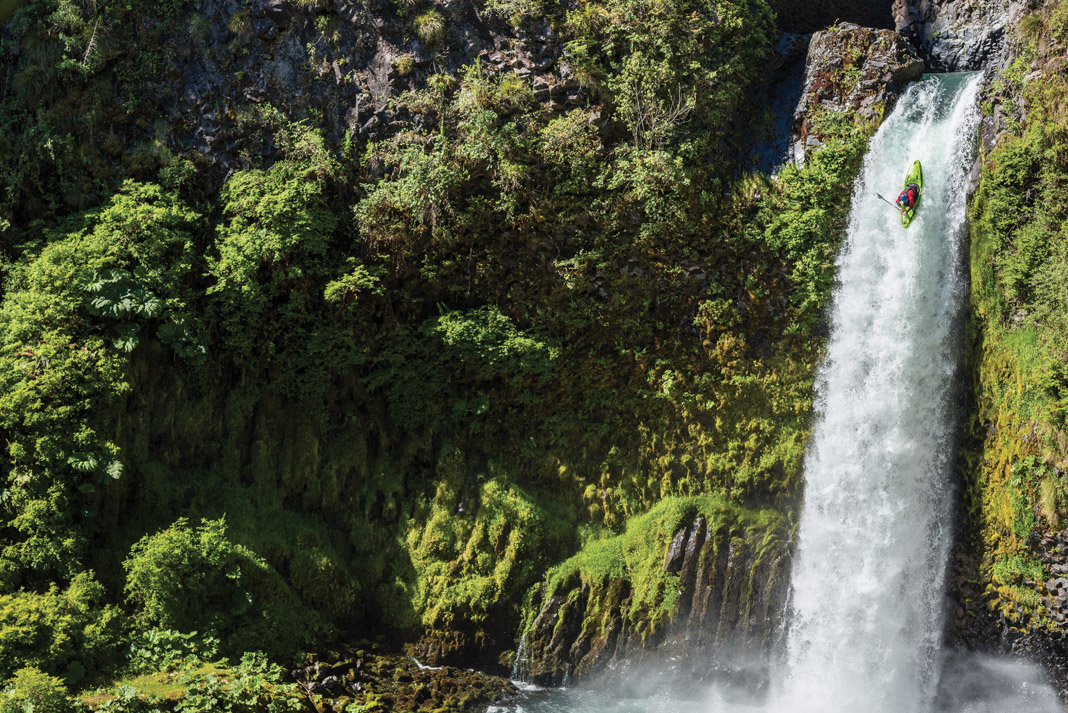
Waterfalls, creeks and dormant volcanoes
South of Curacautin, this waterfall has only seen a select few runs, including the first and second descent by Aniol Serrasolses back in 2015. Edward Muggridge and Jan Choutka made the decision to paddle off this clean approximate 80-footer. Ed, who broke his back off of Tomato 2 in Mexico a year to the day earlier, was the first of the two to fire off this seldom-paddled waterfall. Jan (shown above) is the first known C1 boater to have descended this drop and we think collected the record for highest descent in a C1.
The Palguin was mostly at a solid state the majority of the summer season. Having stretches like the Upper and Lower Palguin full of drops and scenery makes for a joyful afternoon lap away from the hustle in downtown Pucón. These small, creeky sections are mostly run by kayakers and are no stranger to private North American groups learning how to paddle off waterfalls during their Chilean expedition.
An eight-hour drive south of Santiago leads you to Pucón, which is directly under Villarrica, an active volcano. The reason Pucón is such a great destination for kayakers is the accessibility of different types of rivers and paddling adventures. The area is known as The Siphon because there is no reason to leave in search of other rivers and places to explore. Best yet, there are many hostels that are willing to accommodate smelly kayakers.
Chile has 500 active volcanoes and seeing them is quite a different experience from paddling in the Rockies. With volcanoes comes amazing whitewater and ever-changing features if there are earthquakes or eruptions. There are plenty of rivers that are in direct correlation to a volcano, in fact it is almost guaranteed that you can find a waterfall at the base of any volcano.
Pucón is a mecca for Chilean whitewater kayaking
A majority of kayaker income for those looking to work is in the tourism industry in Pucón. Be it raft guiding or waiting tables, kayakers have the opportunity to work here and play here. As spring ramps up to the incredibly busy summer in Pucón, the streets are alive with tourists ready to go whitewater rafting.
You can find everything from class II blue-water scenic runs to class V jungle creeks and waterfalls all within a couple hours of town. The classic stretches of Pucón are, but not limited to the Palguin, Trancura (above), Liucura, Nevados, and Turbio rivers. If you have the availability to travel out of Pucón, two hours south in the Lake District are runs like the Upper, Middle, and Lower Fuy.
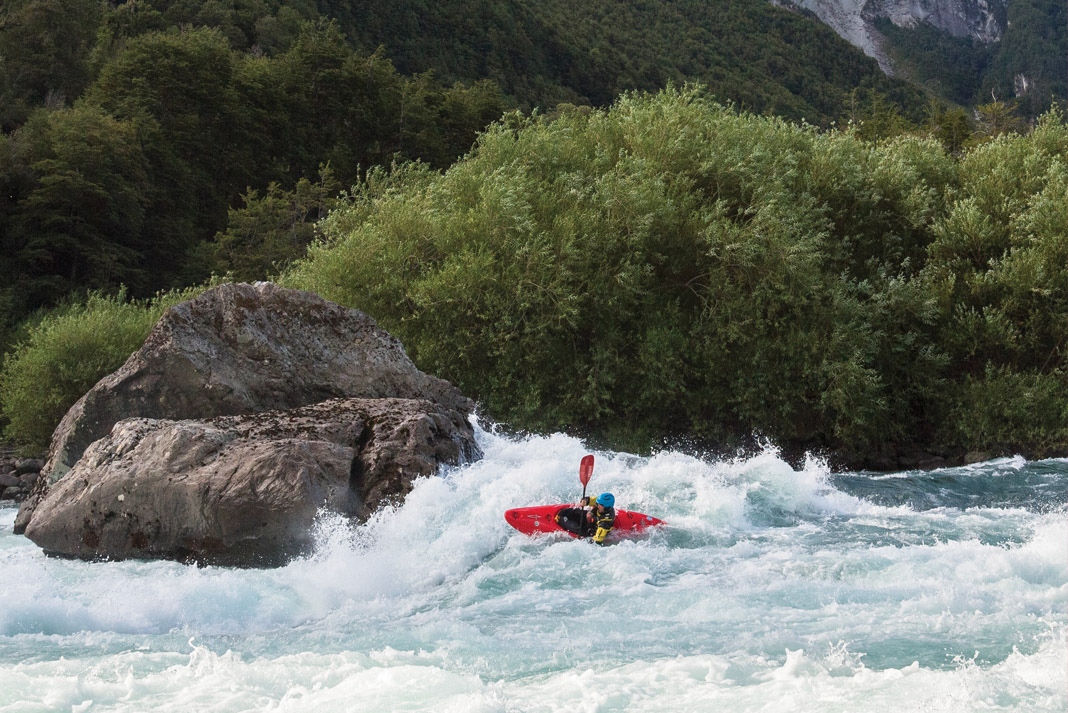
The Futaleufú River offers some of the best whitewater kayaking in Chile
The Futaleufú River in the depths of Patagonia, Chile is the ultimate destination of an experienced whitewater kayaker. This world-class river runs close to the Argentinian border and its forests are thick with trees and bush. If you didn’t feel small enough in the big water all you have to do is look up and feel like a tiny molecule in this utterly scenic mountain corridor.
Paddlers have to earn their way to this deep and historical river. To get there you must take one or several ferries across the inlet of the Pacific Ocean. Once across, you arrive in the ghost town of Chaitén and then proceed on a dirt road for two hours to the Futa. Another route is to drive from Osorno, Chile east into the Andes, across the Argentinian border, south through Esquel and then back into Chile. The town of Futaleufu is actually right on the border of Argentina and Chile. Either route will set you back about two days of travel.
The most popular section of the Futa is simply known as the bridge-to-bridge section. It lies 40 minutes away from the tiny town of Futaleufú itself. The run is relatively continuous and contains amazing class IV wave trains that both kayakers and raft guides appreciate. The water is chock full of surf and kick-flip waves and the black cliff walls contrast sharply with the blue river. To many, this is the definition of Patagonia kayaking.

Cara Del Indio is a large property alongside the road that leads into the town of Futaleufú. Located in the middle of the bridge-to-bridge section, you can live cheaply here for a few weeks for less than the price of a couple nights stay at a three-star hotel in the States.
Reflecting on two months spent whitewater kayaking in Chile
Our three week stay allowed us to experience the quincho life and responsibilities it holds. A quincho is a hut that provides shelter, a fire pit and room to sleep. Being away from the town of Futa, we are responsible for getting there and shopping for food and supplies as needed. We learned to cook incredible meals in a disco—a large wok-like pan made to stand over a pit of coals.
Staying so close to the Futa was one of my luckiest experiences as a paddler. Besides large waves, good times and amazing scenery, this river has excellent fishing for the down days. Not enough could be said about the need to protect this river and its community of locals and gringos who travel to this Chilean whitewater kayaking oasis.
This article was first published in Issue 51 of Paddling Magazine. Subscribe to Paddling Magazine’s print and digital editions, or browse the archives.



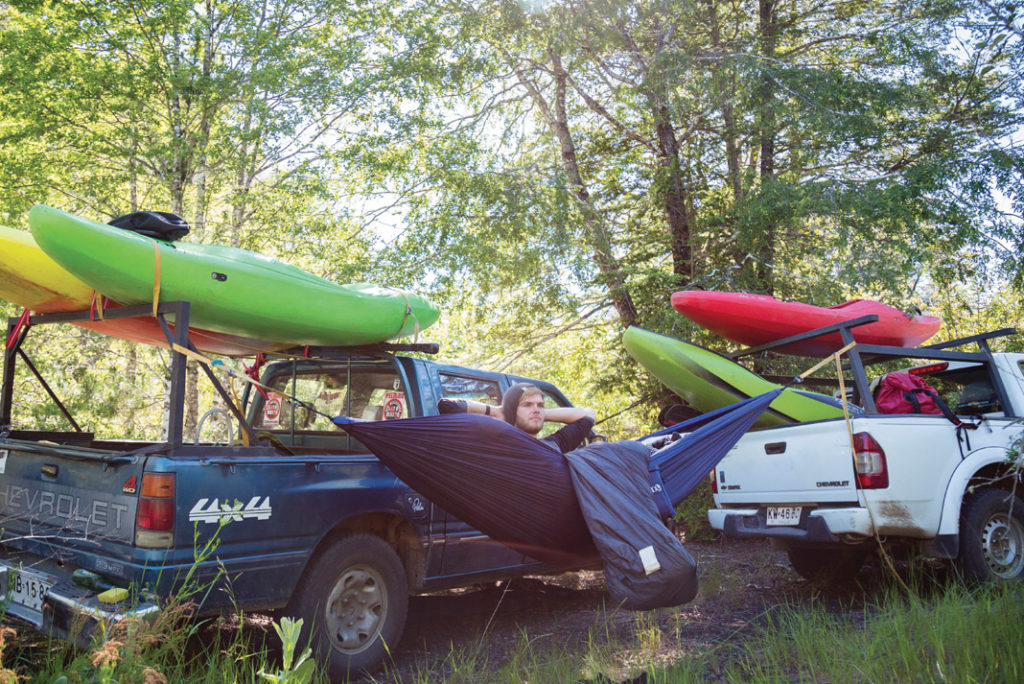
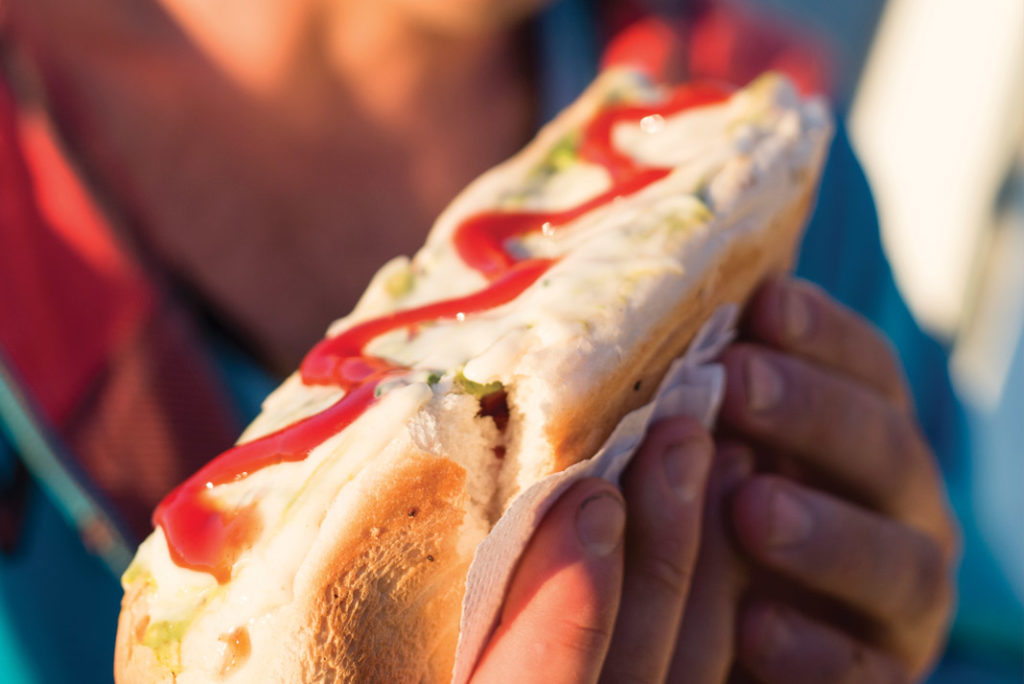
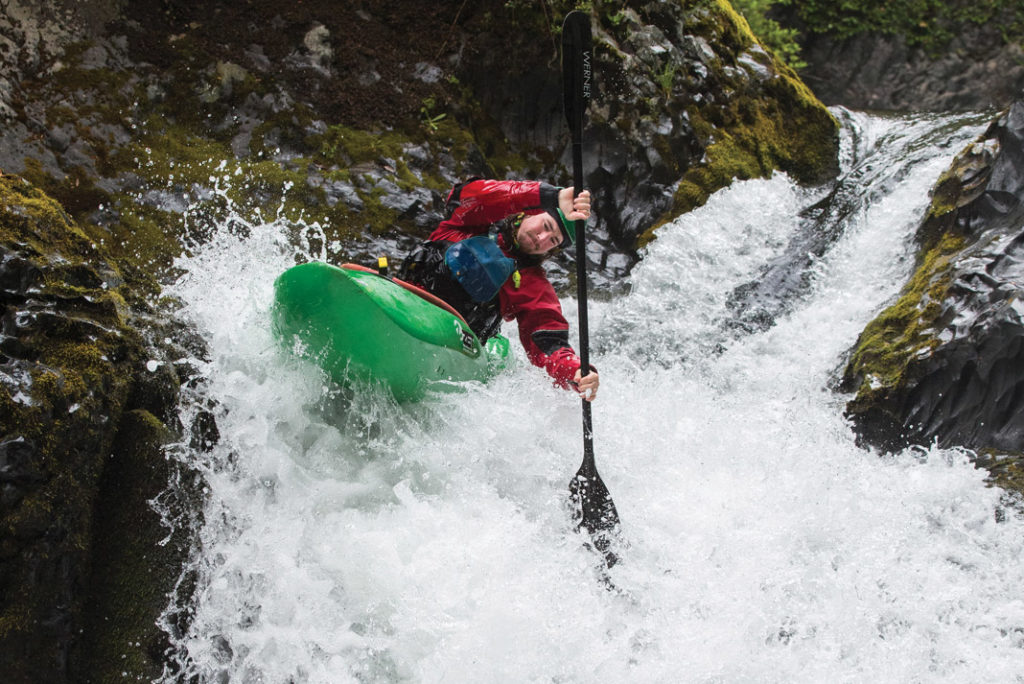


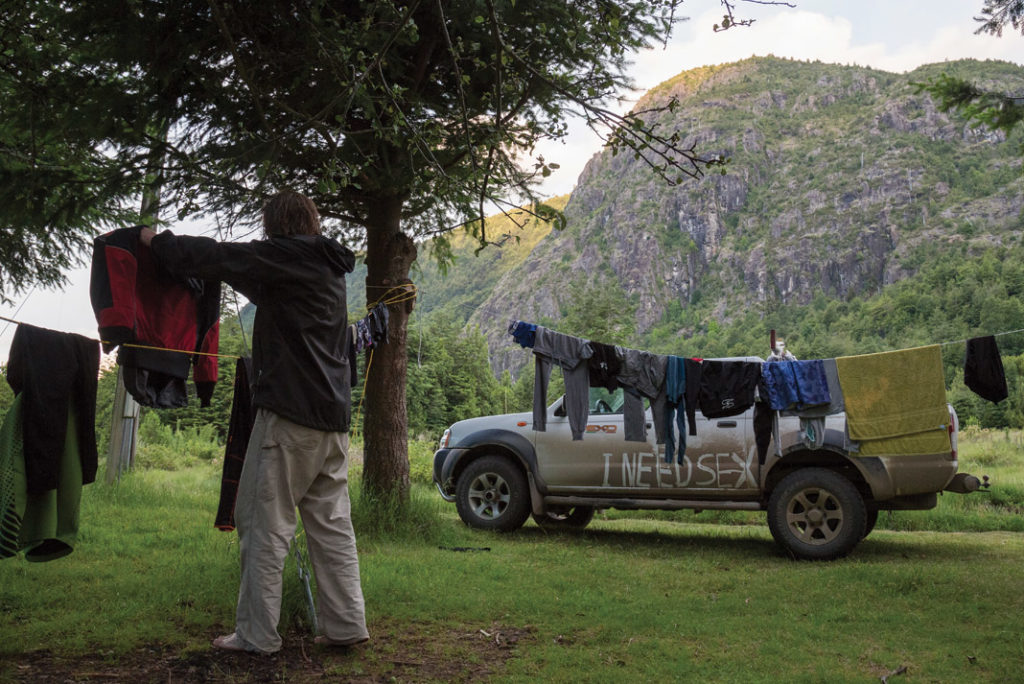

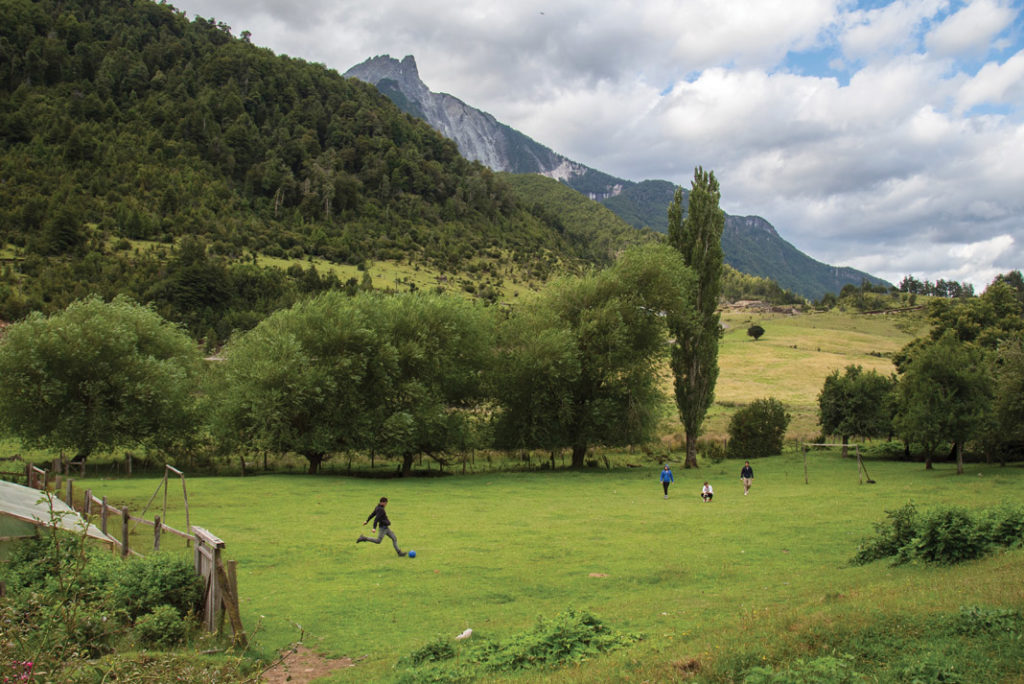
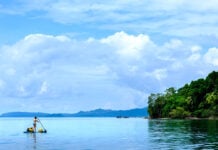


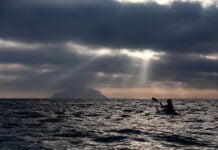
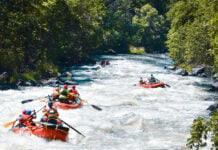

Hey John,
I live up in Cascade ID, and we’re headed to Futaleufu this winter! Do you know of any cheap/free camping around Futa?
Thank you,
Lee
Hi Lee, Im the owner of Chiles Pucón Kayak Retreat. Cara del Indio is the economical goto Futa spot for camping. Location is between bridge to bridge. Email me if you have logistics questions. Happy to help. KEEP KAYAKING.